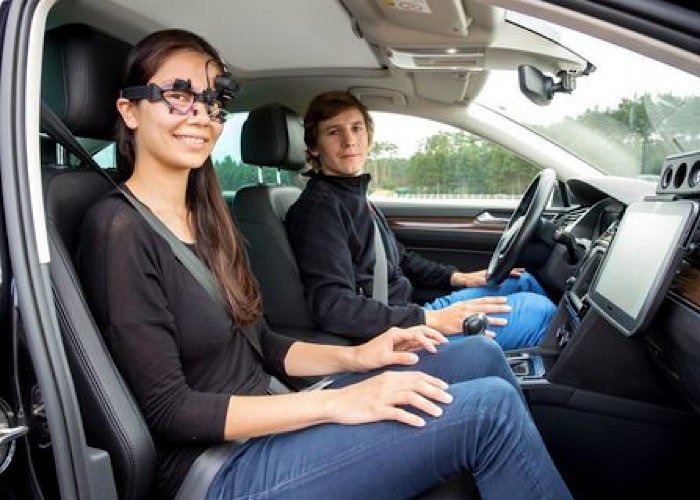
While at the outset the dream of incorporating self-driving cars into our daily lives seems to only have one concern, that of safety, it turns out there’s an additional worry that society will be faced with.
Some passengers that ride in cars have traditionally been open to motion sickness. With no drivers and all passengers in self-driven cars, that means an increase in motion sickness. This has led Volkswagen to test anti-motion sickness technology for autonomous cars.
Volkswagen’s Anti-Motion Sickness Technology
Motion sickness can strike in a car, on an airplane, and can also affect people on a ship, though this is slightly different and labeled as seasickness. But in all these, it’s the passenger who is affected. With autonomous vehicles, everyone is a passenger.
Volkswagen announced it has scientists in Wolfsburgh, Germany, studying motion sickness in self-driving cars, with the purpose of developing a solution to prevent it.
One of these tests involves using large strips of LEDs inside the car. They glow red or green in relation to the vehicle slowing down or speeding up to help passengers anticipate the movements of the car, as motion sickness is caused by not knowing what direction the vehicle will move next.

Another situation that leads to motion sickness is a passenger’s perception in comparison to the actual movement. This has led Volkswagen to create movable seats.
In their testing, the auto company placed people in a self-driving car and hooked them up to skin-temperature and heart-rate sensors. Cameras that evaluate skin tone were used as well while the subjects rode along through stop-and-go movement behind a lead car.
There was also a tablet display mounted to the dashboard playing a video of swimming fish to mimic a time when autonomous cars will be trusted 100 percent to do all the driving. Without any protection, the subjects often became sick.
No Solutions Yet
It’s lucky that incorporating autonomous vehicles into our daily lives seems to be a long ways off, as Volkswagen has not found a solution yet to the problem.
But it’s apparent this situation needs to be tackled. While, of course, the safety of self-driving cars should come first, motion sickness needs to be addressed as well, as it won’t be a system that works well at all, regardless of safety, if people prone to motion-sickness are still subject to this, making Volkswagen’s testing very worthwhile.
Are you prone to motion sickness? What do you think of Volkswagen’s attempt to fix this situation in autonomous cars? Do you think the same thing could be applied to non-autonomous situations? Add your thoughts and concerns to the comments below.
Image Credit: Volkswagen via Car and Driver and Public domain







